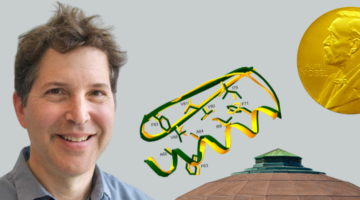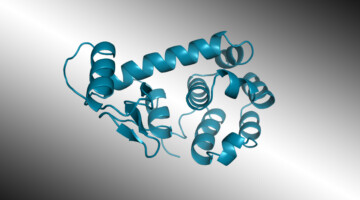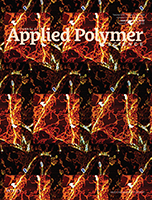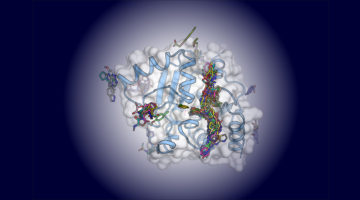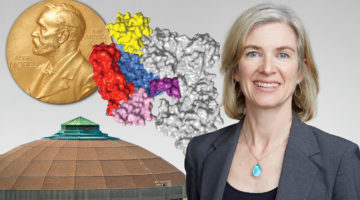The 2024 Nobel Prize in Chemistry was awarded to David Baker, Demis Hassabis, and John M. Jumper for the development of protein structure prediction and design. At the ALS, Baker leveraged high-throughput small-angle x-ray scattering (SAXS) and protein crystallography capabilities to design novel proteins and pave a new pathway for science, technology, and the environment. Read more »
Time-Resolved SAXS Screen of Small-Molecule Drug Candidates
Time-resolved, high-throughput, small-angle x-ray scattering improved the screening of small-molecule drug candidates, providing insight into how they stimulate structural transitions in protein targets. The work will speed the discovery of treatments designed to activate biomolecular dynamics associated with desired therapeutic outcomes. Read more »![]()
![]()
Novel modifications of PARP inhibitor veliparib increase PARP1 binding to DNA breaks
The catalytic activity of PARP1 is associated with DNA damage detection and repair among other cellular functions. We describe efforts to modify the allosteric properties of veliparib, a potent catalytic inhibitor of PARP1. These compounds highlight a unique way to trigger PARP1 retention on DNA breaks and open a path to unveil the pharmacological benefits of such inhibitors with novel properties. Read more »
Chatbot-Style AI Designs Novel Functional Protein
Researchers used an artificial intelligence (AI) algorithm, similar to those used in natural-language (“chatbot”) models, to design a functional protein that was then structurally validated at the ALS. The work could speed the development of novel proteins for almost anything from therapeutics to degrading plastic. Read more »![]()
![]()
Uncompetitive, adduct-forming SARM1 inhibitors are neuroprotective in preclinical models of nerve injury and disease
Researchers describe potent small-molecule inhibitors that are neuroprotective in preclinical models of nerve injury and disease. The cover depicts the destruction of an axon by the enzyme SARM1, shown disproportionately large to convey its catastrophic role in driving degeneration once it is activated upon injury. Read more »
Programmable stiffness and stress–relaxation of cross-linked self-assembling peptide hydrogels
An AFM image representing a supramolecular hydrogel based on a cross-linked self-assembling peptide (SAP). Cross-linking allows for precise tuning of biomechanical properties, spanning the range of stiffness values found in the human central nervous system, pancreas, liver, lung, and skin tissues. The findings provide a new strategy helpful for soft tissue regeneration. Read more »
Sifting through Fragments for COVID-19 Treatments
COVID-19 vaccines are essential for preventing serious disease, but the identification of new drugs is still necessary for the treatment of patients who become sick as a result of SARS-CoV-2 infection. Here, scientists used computational docking and crystallography to screen large numbers of small molecules for potential use in drug compounds. Read more »
Inhalable COVID-19 Protection via Synthetic Nanobodies
Protein structures obtained in part at the ALS helped researchers to increase the potency of simplified antibodies (nanobodies) designed to neutralize SARS-CoV-2. Stable enough to be used in inhalers or nasal sprays, the nanobodies offer a new option, aside from injected vaccines, for COVID-19 prevention and treatment. Read more »![]()
![]()
Domain-Swap Dimerization of Acanthamoeba castellanii CYP51 and a Unique Mechanism of Inactivation by Isavuconazole
We investigated the mechanism of action of antifungal drugs in the human pathogen Acanthamoeba castellanii. We discovered that the enzyme target formed a dimer via an N-termini swap, whereas drug-bound AcCYP51 was monomeric. Cover image shows a molecular model of the AcCYP51 dimer in a phospholipid bilayer. Read more »
Jennifer Doudna and the Nobel Prize: The Advanced Light Source Perspective
The 2020 Nobel Prize in Chemistry was awarded to Jennifer Doudna and Emmanuelle Charpentier for the development of a world-changing gene-editing technology. At the ALS, Doudna’s work on CRISPR-Cas9 was enabled by many visionary people with innovative ideas, implemented in support of a world-class structural biology program. Read more »![]()
- 1
- 2
- 3
- 4
- Next Page »
